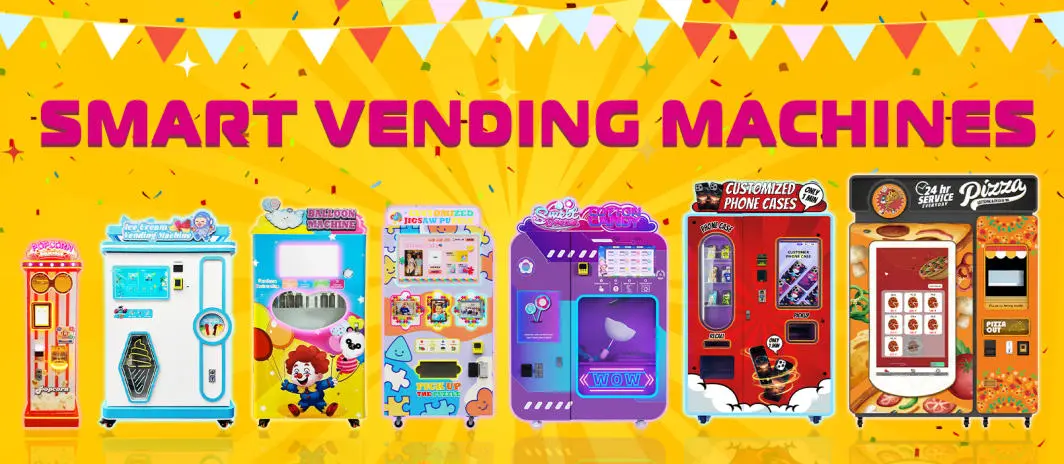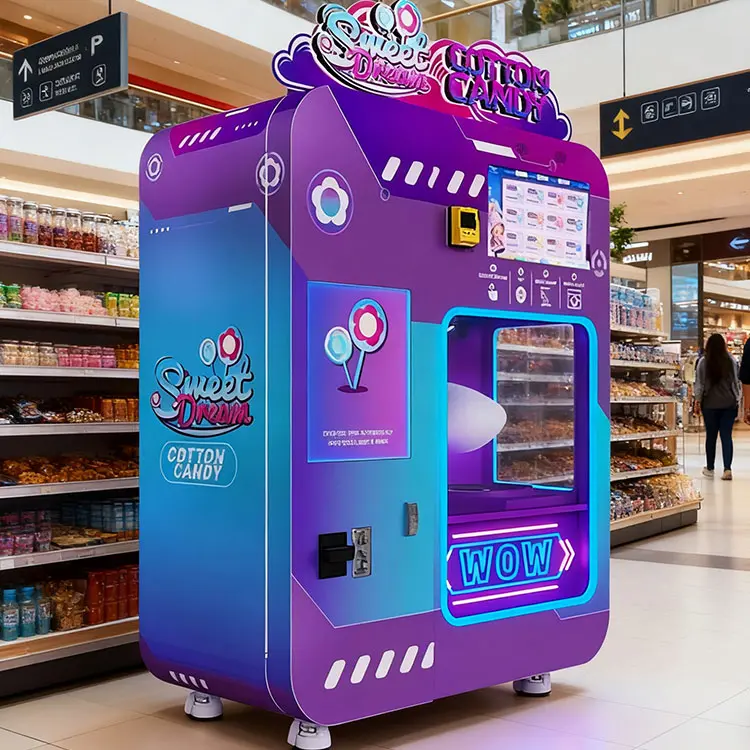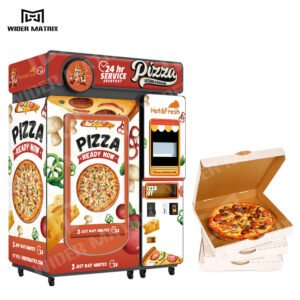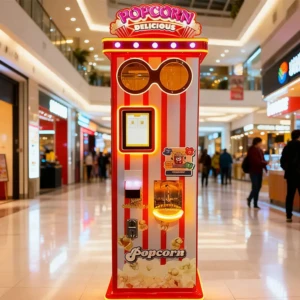If you’re considering entering the lucrative vending machine business, the first and most critical question is: how much do vending machines cost? The answer isn’t a single number, as prices vary dramatically based on machine type, technology, capacity, and features. From a few thousand dollars for a basic snack machine to over $10,000 for a high-tech specialty unit, understanding the full investment is key to making a profitable decision. This guide breaks down all the costs involved, from the initial machine purchase to ongoing operational expenses, helping you budget accurately for your new venture.

Breaking Down Vending Machine Costs by Type
The type of machine you choose is the single biggest factor determining your upfront cost. Generally, machines fall into three categories: traditional snack/drink, combo units, and innovative specialty machines.
1. Traditional Snack and Drink Vending Machines
These are the most common vending machines, found in offices, schools, and break rooms. They are typically the most affordable entry point.
- Used Snack Machines: $1,500 – $3,500
- New Snack Machines: $3,000 – $6,000
- Used Drink Machines: $2,000 – $4,000
- New Drink Machines: $4,000 – $8,000
These prices are for standard, mechanically cooled machines. Glass-front snack machines and refrigerated drink machines with advanced payment systems will be at the higher end of the range.
2. Combo Vending Machines (Snack & Drink)
Combo machines offer the convenience of both snacks and cold drinks in a single unit, perfect for locations with limited space. Expect to pay between $4,500 and $9,000 for a new, reliable combo machine.
3. Specialty & High-Tech Vending Machines
This is where the vending industry is booming. These machines offer unique, high-margin products and command higher prices due to their complex technology.
| Machine Type | Price Range (New) | Key Features |
|---|---|---|
| Ice Cream Vending Machine | $5,000 – $10,000+ | Advanced refrigeration, temperature monitoring, multiple flavor options. |
| Fully automatic cotton candy vending machine WM980 | $4,500 – $7,500 | Fully automated production, multiple flavors, hygienic sealed cabin. |
| Cell Phone Case Vending Machine | $5,000 – $8,000 | On-demand customization, printing technology, high-profit margins. |
| Pizza Vending Machine | $8,000 – $15,000+ | Heating/cooking technology, ingredient refrigeration, complex inventory management. |
For example, a high-quality commercial cotton candy vending machine like the WM980 Plus, which originally cost US$6,700, is now available at a promotional price of US$4,999. This represents significant savings for entrepreneurs looking to capitalize on the high-profit sweet treats market.

Beyond the Machine: Additional Costs to Consider
The purchase price is just the beginning. A realistic budget must account for these ongoing and one-time expenses:
- Initial Stock: $200 – $800 to fill the machine for the first time.
- Location Commission: 5% to 25% of gross sales paid to the property owner.
- Transportation & Installation: $200 – $1,000 depending on distance and complexity.
- Insurance: $300 – $600 annually per machine.
- Maintenance & Repairs: Set aside $200 – $500 annually for unexpected fixes.
- Credit Card Processing Fees: 2-4% of each cashless transaction.
- Electricity: $20 – $50 per month, per machine.
New vs. Used Vending Machines: Which is Right for You?
This is a fundamental decision that impacts your cost, reliability, and feature set.
Buying New Vending Machines
Pros: Warranty coverage, latest technology (like cashless payments and IoT remote monitoring), higher reliability, and energy efficiency.
Cons: Higher upfront cost.
Best for: Entrepreneurs who want minimal maintenance headaches and access to modern features that can increase sales.
Buying Used Vending Machines
Pros: Lower initial investment, faster break-even point.
Cons: Potential for higher repair costs, outdated technology, may lack energy-efficient components.
Best for: Those on a tight budget or testing a new location before committing to a major investment.
Financing Your Vending Machine Business
You don’t always need to pay the full cost upfront. Many suppliers, including established companies like Wider Matrix, offer financing options or payment plans. This can make higher-end, more profitable machines accessible by spreading the cost over time, aligning payments with your incoming revenue.
Maximizing Your Return on Investment (ROI)
The cost of the machine is less important than the profit it can generate. To maximize ROI:
- Choose the Right Machine for the Location: A cotton candy machine belongs in an entertainment venue, not an office building.
- Prioritize High-Margin Products: Specialty items like custom phone cases or fresh-made snacks often have better margins than traditional candy bars.
- Invest in Modern Technology: Machines with cashless payments can increase sales by 20-30%. IoT features, like those found in Wider Matrix vending machines, allow for remote stock monitoring, reducing downtime.
For instance, investing in a phone case printing vending machine, which might have a higher upfront cost, can be highly profitable due to the low cost of goods. Blank cases can be purchased for as little as US$1.30 each and sold for a significant markup for a customized product.
Frequently Asked Questions (FAQ)
What is the average cost of a starting a vending machine business?
For a small start with one or two used snack/drink machines, you can begin with $5,000 – $10,000, covering the machines, initial stock, and basic expenses. A larger operation with new, specialty machines can require $20,000 – $50,000 or more.
Are there any hidden costs with vending machines?
The most common “hidden” costs are location commissions (which can be a significant percentage of sales), unexpected repair bills, and credit card processing fees. Always factor these into your profitability calculations.
How long does it take to profit from a vending machine?
This varies widely based on location, product markup, and machine cost. A well-placed machine can break even in 6-12 months. High-traffic locations with high-margin products can see a return even faster.
Can I get a vending machine for free?
While you typically cannot get the machine itself for free, some vending operators may place a machine on your property for free in exchange for a share of the revenue. This is known as a “placement” agreement, but you give up a portion of your profits.
What are the profit margins for vending machines?
Gross profit margins on products are typically 40-60%. After accounting for the cost of goods, location commission, and other expenses, the net profit margin is usually between 10% and 30%.
What makes Wider Matrix vending machines a good investment?
Wider Matrix specializes in innovative, high-tech vending solutions like iPhone case vending machines and cotton candy machines. Their machines are built with IoT technology for remote management, are certified to international standards, and are designed for high reliability and profitability in niche markets. For example, their WM550 ice cream machine, originally priced at US$7,700, is often available at a promotional price of US$5,799, offering advanced features at a competitive point.

Is the vending machine industry growing?
Yes. The industry is evolving beyond snacks and drinks. The rise of interactive, specialized machines offering fresh food, electronics, and personalized products is driving significant growth. Related markets, like the jigsaw puzzle market, also show strong growth, which benefits specialty vending concepts.
Related Topics
- Vending Machine Supplier Guide
- Profitability of Specialty Vending
- Best Locations for Vending Machines
- Cashless Payment Systems for Vending
- Vending Machine Maintenance Tips
Conclusion: Investing Smartly in Your Vending Future
So, how much do vending machines cost? As we’ve seen, the spectrum is broad, ranging from a few thousand to over fifteen thousand dollars. The key to a successful investment is not just finding the cheapest machine, but the right machine for your target market and location. While traditional snack machines offer a lower barrier to entry, the higher profit potential of innovative specialty machines can lead to a faster and greater return on investment.
Partnering with a reputable supplier that offers reliable equipment, good service, and fair pricing is crucial. Companies like Wider Matrix provide technologically advanced vending machines designed for the modern market, often with attractive promotional pricing that makes high-tech vending more accessible. By carefully considering all costs—both upfront and ongoing—you can build a profitable and sustainable vending business.






Comments
No comments yet. Be the first to comment!